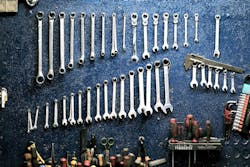How Predictive Maintenance Software Mimics Technicians
Nov. 13, 2020—When it comes to designing computer software that learns to predict automotive maintenance issues, Shiva Bhardwaj says there’s no better model than the human technician.
“Good mechanics, they train themselves, their own brain,” he says. “If I'm a Mercedes expert on a C class, I’ve seen 500 of them, and then I know the top three issues or places to look on a car where typically it will lead to something big.”
Bhardwaj is the CEO of Pitstop, a cloud-based predictive maintenance platform that’s aimed at fleet and aftermarket repair sectors, among others. In an interview, he spoke in an interview with ADAPT how his technology works and improves upon itself.
Background
Bhardwaj grew up around the family auto repair shop. That’s what propelled him to pursue his career path.
“That really got me into: how do electronics control these engines?” he says. “How do these systems work? How do you program an ECU?”
While still in school, Bhardwaj developed a safety tool that supports hood and trunk struts while technicians do their work. He went on to work for some big tech companies, but his invention helped propel him to pitch to a startup funding group that helped him launch Pitstop. With the help of the knowledge in the family auto shop, he worked to make the software more robust.
How It Works
What separates his predictive maintenance software from previous products like OBD-II diagnostic monitors, is the learning capability.
In tech, it’s called process training. The software program will review all of the diagnostic information at the time of a part malfunction. After learning from more and more cases, it gets a better idea of what factors might lead to a certain issue in the vehicle.
“For example, if a battery was replaced, our system will look at all the sensor data from the car to understand: Was there anything signaling a battery issue? And then we use enough of this type of sequence of data from the car and from the shop to then once we get over 30 cases per vehicle, then we start to build the algorithms,” Bhardwaj says.
With more and more test cases, the program builds a massive knowledge base, much like a technician who has worked on hundreds of vehicles.
The final piece of this system is the repair shop itself. Ideally, shops would have a base of regular customers who would use predictive maintenance software to identify potential issues. They would then schedule service with the shop to maintain or fix that issue.
The Wireless Future
Bhardwaj has set up his platform to work with existing OBD-II units that, for example, fleet owners might already be using. But the real focus is in wireless transmission, particularly as more and more vehicles come from the factory with connectivity capabilities.
“That last way is the way of the future,” he says. “Direct telematics integration.”
He says that he’s excited to jump into this market early to gain an edge and build on prior success and be prepared to utilize any new data opportunities that OEs make available.
Currently, Bhardwaj says that his program is set up to use data from the most common array of vehicle sensors out today to get a wide cohort of data that can be used by lots of customers.
“Today, if we can aggregate as much of these failure cases as possible that are available across many vehicles, the predictive accuracy will go really high,” he says.
Bhardwaj hopes that a more open data environment in the future will create new opportunities for companies like his to build products to benefit drivers— and shops.
“For those looking for an edge, this is the way of the future,” he says. “And to get involved now is how you learn about those technologies and build that muscle.”
Image: Pitstop
